 My husband served a couple of years in the Navy as a young man, and what remains of that experience is his love for everything maritime and nautical. Our house is littered with little boats, shells, beach pictures, lighthouses, and so on and so forth. I have a hard time restraining him from collecting more sea-themed decorations whenever we visit a flea market. It’s not that I don’t like the sea; it’s just that I don’t want every room to be covered in flotsam and jetsam! But, as he is a man, he also tends to litter the house with cables, bottle openers, screws, and Allen wrenches. He absolutely needs more boxes in which to store all of these trinkets! He needs this flotsam and jetsam trinket box!
My husband served a couple of years in the Navy as a young man, and what remains of that experience is his love for everything maritime and nautical. Our house is littered with little boats, shells, beach pictures, lighthouses, and so on and so forth. I have a hard time restraining him from collecting more sea-themed decorations whenever we visit a flea market. It’s not that I don’t like the sea; it’s just that I don’t want every room to be covered in flotsam and jetsam! But, as he is a man, he also tends to litter the house with cables, bottle openers, screws, and Allen wrenches. He absolutely needs more boxes in which to store all of these trinkets! He needs this flotsam and jetsam trinket box! ![]()
Here’s what you will need for your own cute maritime trinket box . . .
Driftwood:
- Aluminum foil
- Plastic wrap
- Pastry bag with #199 open star tip, or equivalent
- Light brown royal icing, stiff consistency
- Scribe tool
- #2 round tip, or equivalent
- Soft-bristle paint brush
- Powdered colors: Chocolate, Olive Green, Shadow Grey, and Snow Drift by Rainbow Dust
- White royal icing, stiff flooding consistency
- Tray covered with parchment or baking paper
- Pastry bag with #2 round tip, or equivalent
- Pastry bag with #0 round tip, or equivalent
- Scribe tool
- Food colorings: yellow, orange, red, pink, ivory, and brown (e.g., Wilton Color Right Food Coloring System)
- Vodka or clear extract
- Soft-bristle #1 paint brush
- #4/0 paint brush
- 3-D box cookie cutter set (e.g., Jewelry Box from De Koekenbakkers) and cookie dough of your choice
- Light grey royal icing, stiff consistency
- Kitchen knife
- White food coloring
- White food coloring, tinted light blue and light green
- Vodka or clear extract
- Large hard-bristle paint brush
- Soft-bristle paint brush
- Powdered colors: Snow Drift, Navy Blue, Olive Green, and Shadow Grey by Rainbow Dust
- Light grey royal icing "glue", very stiff consistency
- Pastry bag with #2 round tip, or equivalent
- Light brown royal icing, stiff flooding consistency
- Pastry bag with #3 round tip, or equivalent
- Grey-brown royal icing, soft peak consistency
Let's get started!
Driftwood Method
We'll begin with the driftwood that will become the handle of the box. Take some aluminum foil and crinkle it, forming a ridge in the middle to support the curve of the handle while drying. Cover the aluminum foil with plastic wrap to keep the foil from leaving marks on the icing. Now, using the #199 open star tip, pipe the stiff light brown royal icing over the foil ridge to create your handle. I piped mine about 2 1/2 to 3 inches (6 1/2 to 7 1/2 cm) long, with a smaller side piece. The open star tip will give the handle a serrated look right from the start (1).
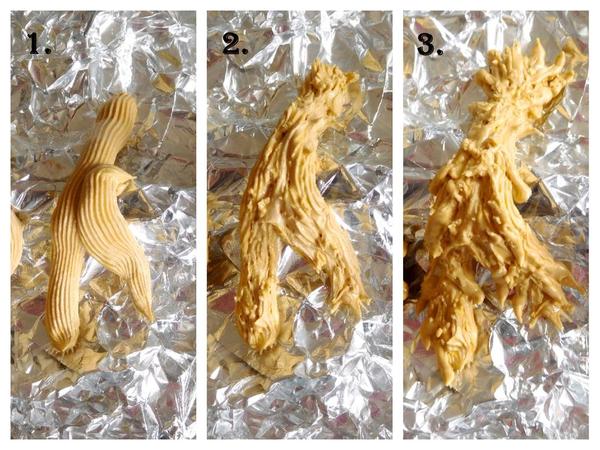 Take your scribe tool and roughen the surface (2). Then switch the tip on the bag to the #2 round tip, and add tiny branches to the handle. Blend everything together with the scribe tool (3).
Take your scribe tool and roughen the surface (2). Then switch the tip on the bag to the #2 round tip, and add tiny branches to the handle. Blend everything together with the scribe tool (3).
Now take another piece of crinkled aluminum foil and cover it with plastic wrap. Pipe more small branches using the #2 tip (1), and rough them up with the scribe tool (2). Make about 5 to 6 branches in total.
 Set the branches and handle aside to dry, which can easily take two days, depending on humidity.
Set the branches and handle aside to dry, which can easily take two days, depending on humidity.
Once your driftwood pieces are dry, use a soft brush to dust them with an assortment of powdered colors to create a more realistic look. Start out with Chocolate, then add Olive Green, Shadow Grey, and Snow Drift in this order.
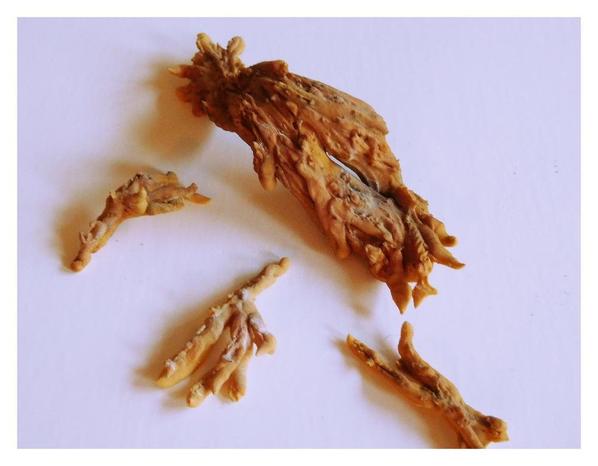 Starfish, Conch, and Shell Method
Starfish, Conch, and Shell Method
Now on to the sea life! The royal icing consistency for these pieces is a bit tricky, as it needs to hold its shape, yet still settle into a smooth surface with the help of a scribe tool. I personally call this "stiff flooding consistency-royal icing" (SFCRI). As you can see in the picture below, the blob I let drop from the spoon stays visible, but the icing is still of flooding consistency. That’s just the consistency we need.
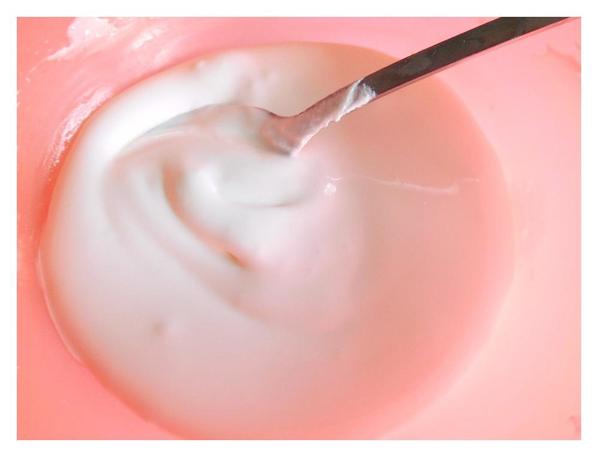 Cover a tray with parchment or baking paper. Fill two pastry bags with SFCRI, one with a #2 tip and the other with a #0 tip, and have your scribe tool ready. Prepare 5 to 6 of each sea creature, following the methods below.
Cover a tray with parchment or baking paper. Fill two pastry bags with SFCRI, one with a #2 tip and the other with a #0 tip, and have your scribe tool ready. Prepare 5 to 6 of each sea creature, following the methods below.
For the starfish, use the bag with the #2 tip to pipe five lines, for arms, joined in the middle (1). Add a large bead of SFCRI to the center (2). Use the scribe tool to smooth out the icing and form points at the end of the arms (3). Let the SFCRI dry for a few minutes, until it slightly crusts, before adding tiny dots to the surface with the bag fitted with the #0 tip (4). If you add the dots too soon, they will simply vanish into the body of the starfish; if you add them too late, they will lie on top as separate parts. You may need to experiment a bit to get the right timing.
 For the conches, pipe a large, bulky teardrop with the #2 tip, and use your scribe tool to form a point at the end (1). Let the icing crust. Next, pipe a second section at the wide end of the teardrop. Pipe it at an angle to give the shell a twisted look (2). Let this section dry a bit, and then add a little peak to this same end of the shell using the #0 tip (3). Again, allow a little drying time before piping tiny peaks at the seams of the three sections, using the #0 tip (4).
For the conches, pipe a large, bulky teardrop with the #2 tip, and use your scribe tool to form a point at the end (1). Let the icing crust. Next, pipe a second section at the wide end of the teardrop. Pipe it at an angle to give the shell a twisted look (2). Let this section dry a bit, and then add a little peak to this same end of the shell using the #0 tip (3). Again, allow a little drying time before piping tiny peaks at the seams of the three sections, using the #0 tip (4).  The clam-like shells are the easiest, as they are just a fan shape, really. Pipe a long teardrop with the #2 tip, and create a point at the narrow end with the help of the scribe tool (1). Next, add three more teardrops to both the left and right sides of the central (first) teardrop (2), piping each teardrop shorter and thinner than the one just piped (3). Last, pipe a little square at the point where the narrow ends of the teardrops meet (4). As with the conches, a little drying time between the steps is needed to keep the shell sections separate and distinct.
The clam-like shells are the easiest, as they are just a fan shape, really. Pipe a long teardrop with the #2 tip, and create a point at the narrow end with the help of the scribe tool (1). Next, add three more teardrops to both the left and right sides of the central (first) teardrop (2), piping each teardrop shorter and thinner than the one just piped (3). Last, pipe a little square at the point where the narrow ends of the teardrops meet (4). As with the conches, a little drying time between the steps is needed to keep the shell sections separate and distinct.
 After the sea life has dried, it is ready to be painted. Mix several food colorings (yellow, orange, red, pink, ivory, and brown) into "paints" by adding a few drops of vodka or clear extract to each. Apply these paints with a soft #1 brush. Blend them together to create a natural look. For smaller details, use a #4/0 brush. Once you are content with the look, remove the transfers from the paper, and store them somewhere safe.
After the sea life has dried, it is ready to be painted. Mix several food colorings (yellow, orange, red, pink, ivory, and brown) into "paints" by adding a few drops of vodka or clear extract to each. Apply these paints with a soft #1 brush. Blend them together to create a natural look. For smaller details, use a #4/0 brush. Once you are content with the look, remove the transfers from the paper, and store them somewhere safe.
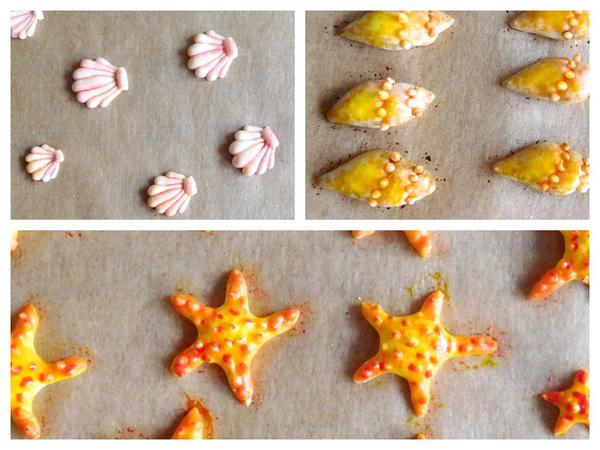 Box Method
Box Method
For the box, I used a box cookie cutter set, but if you don’t have one, you can easily create a box yourself by using large plaque cookies for the top and bottom, and then hand-cutting the body sides to fit the other pieces (1).
Take the light grey stiff consistency-royal icing, and spread it onto the cookies with a knife, creating a rough surface. Use the top edge of the knife (i.e., the non-cutting side of the blade) to draw individual wood planks (2).
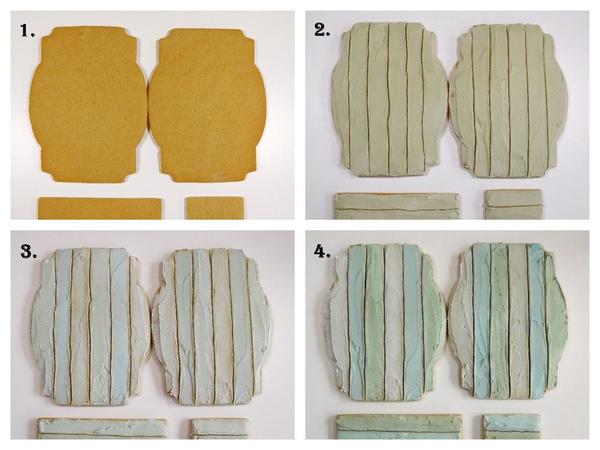 After the icing has dried, dole out three portions of white food coloring. Tint one portion light blue and another one light green, and leave the third portion plain white. Thin the coloring a bit with vodka or clear extract. (I used coloring to vodka in a ratio of about 2 to 1. I wanted the coloring to be on the thin side, almost watery, so that the original box color would still be visible underneath.)
After the icing has dried, dole out three portions of white food coloring. Tint one portion light blue and another one light green, and leave the third portion plain white. Thin the coloring a bit with vodka or clear extract. (I used coloring to vodka in a ratio of about 2 to 1. I wanted the coloring to be on the thin side, almost watery, so that the original box color would still be visible underneath.)
Use a hard-bristle brush to paint the planks in the three different colors, alternating colors as you go and painting unevenly to create a rustic effect. Make sure a little of the underlying grey royal icing shows through (3).
Once the colored coating has dried, it is time for the last step: the wood-aging process. Use a soft brush to dust some Snow Drift, Olive Green, and Navy Blue powdered colors onto the colored planks. Dust the crevices in between the planks with Shadow Grey to give them more depth and dimension (4).
Last, paint the bottom and sides of every cookie with white food coloring.
For an excellent explanation about how to assemble cookie boxes, check out Manu’s recent Cookie Connection post, A Cookie Box for Dad. There's nothing I can add to it, except that this box doesn’t need filing of the edges. Also, it's best to use a light grey royal icing "glue" (very thick consistency) to fix the box sides together at the corners and to the base. By matching the "glue" to the primary box color, it is less likely to be seen if any should peek out.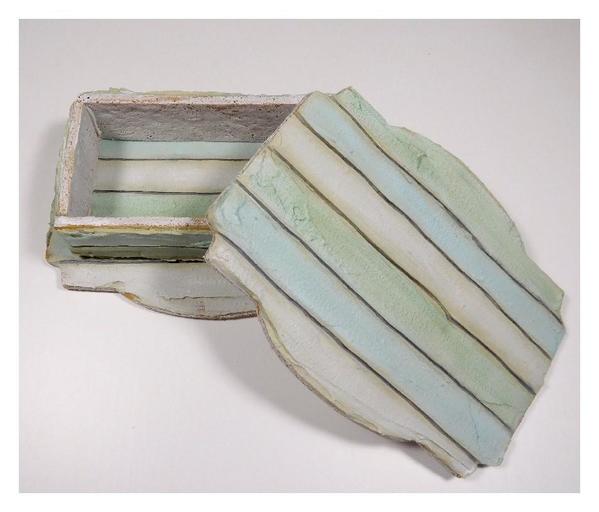 When the icing "glue" has set, it is time to start decorating. Use a pastry bag fitted with a #2 tip and filled with light brown SFCRI to pipe "sand dunes", unevenly, along the lower edge of the box. Use a scribe tool to smooth out the icing surface. Immediately add some driftwood, starfish, conches, and fan-shaped shells to the still-wet dunes.
When the icing "glue" has set, it is time to start decorating. Use a pastry bag fitted with a #2 tip and filled with light brown SFCRI to pipe "sand dunes", unevenly, along the lower edge of the box. Use a scribe tool to smooth out the icing surface. Immediately add some driftwood, starfish, conches, and fan-shaped shells to the still-wet dunes. 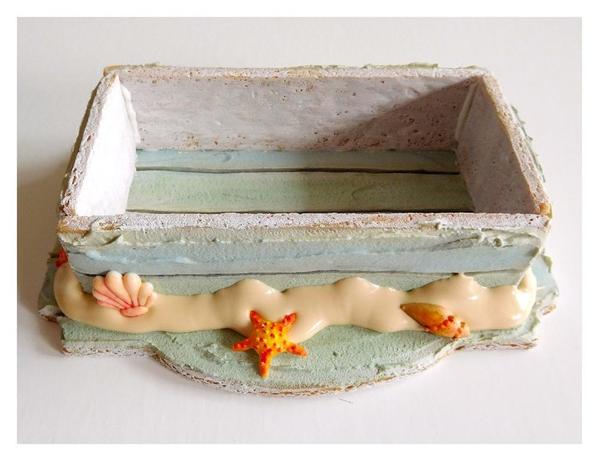 Attach the driftwood handle to the lid with a few dabs of thick icing "glue". Then, using a pastry bag fitted with a #3 tip and filled with grey-brown soft peak-icing, pipe 4 to 5 long lines radiating from one corner of the box to the opposing side. These lines will become the base of a "fishing net". While these lines are still wet, add a few marine creatures on top of the lines (1). These little creatures will eventually appear caught in the net!
Attach the driftwood handle to the lid with a few dabs of thick icing "glue". Then, using a pastry bag fitted with a #3 tip and filled with grey-brown soft peak-icing, pipe 4 to 5 long lines radiating from one corner of the box to the opposing side. These lines will become the base of a "fishing net". While these lines are still wet, add a few marine creatures on top of the lines (1). These little creatures will eventually appear caught in the net!
Next, pipe lines crosswise over the ones you just piped. Start with sagging lines at the top of the net, and make the lines more and more straight as you work your way down. This approach will create the look of a fishing net that is gathered on top and spread out at the bottom (2).
Add the remaining sea life where you like it best (3).
Now, get all those screws, cables, and bottle openers that can be found in various spots in your house, and give them a lovely new home in your brand new trinket box!

 Leoni Eckart, aka Laegwen, started her baking career way before her own memory sets in, decorating Christmas cookies with her mother (at least that's what she's been told!), and has never entirely stopped puttering around in the kitchen since. Her first decorated cookies as an adult were her own wedding favors, and then, over Christmas 2014, her cookie fever went into overdrive! As of present, it shows no signs of cooling off. You can find Leoni on Facebook here, or you can reach her by email at laegwen@outlook.de.
Leoni Eckart, aka Laegwen, started her baking career way before her own memory sets in, decorating Christmas cookies with her mother (at least that's what she's been told!), and has never entirely stopped puttering around in the kitchen since. Her first decorated cookies as an adult were her own wedding favors, and then, over Christmas 2014, her cookie fever went into overdrive! As of present, it shows no signs of cooling off. You can find Leoni on Facebook here, or you can reach her by email at laegwen@outlook.de.
Photo credit: Leoni Eckart
Note: Get Inspired with Laegwen is a bimonthly series of cookie decorating tutorials that follow Leoni Eckart's personal experiments with gumpaste, royal icing, and other cookie decorating materials and methods. This article expresses the views of the author, and not necessarily those of this site, its owners, its administrators, or its employees. To read all of Leoni's past Get Inspired tutorials, click here. And to catch all of our Cookie Connection tutorials, click here.


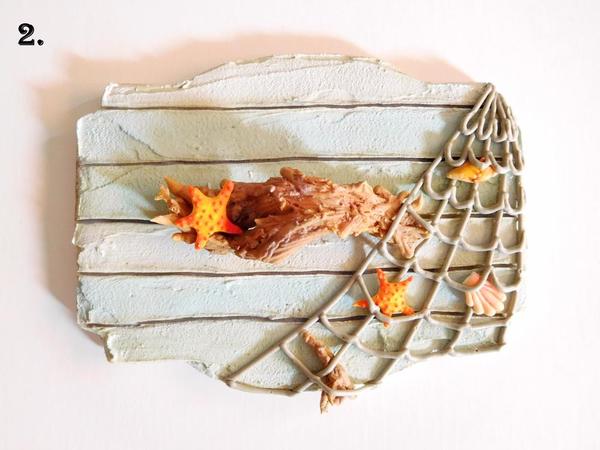
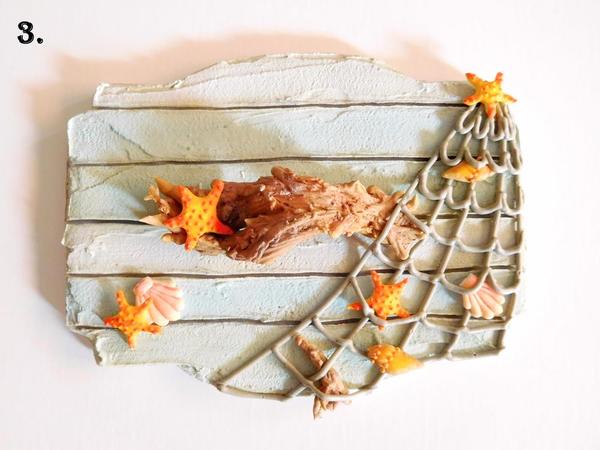
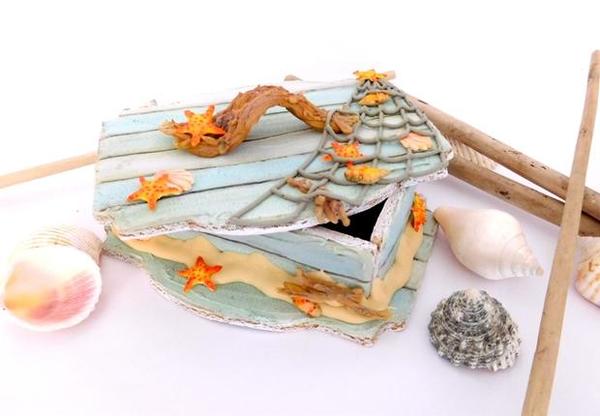
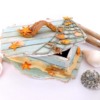





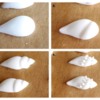
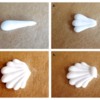
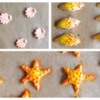
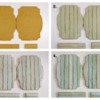

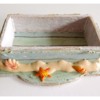
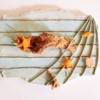
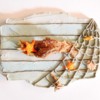


Comments (16)